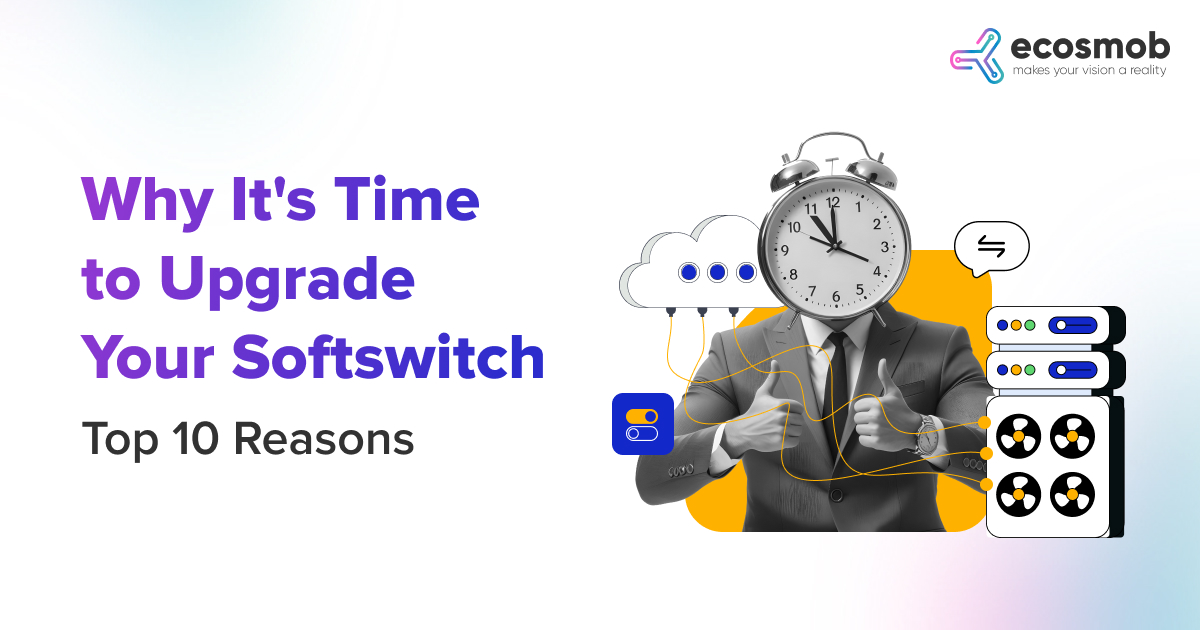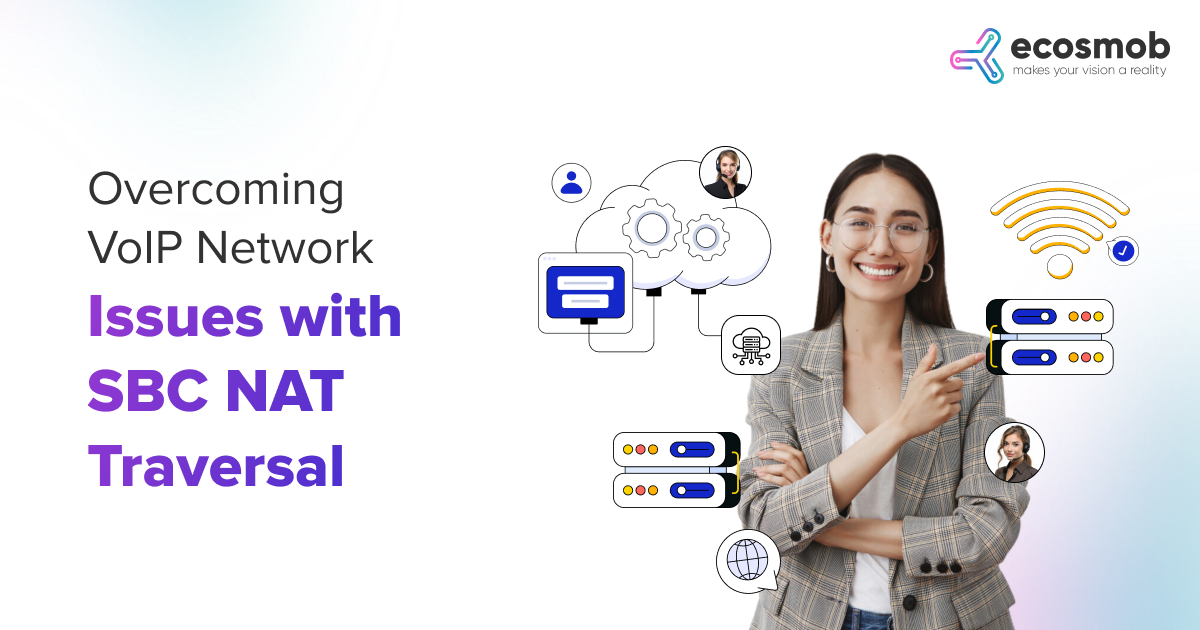Quick Summary: Explore the top 10 compelling reasons why upgrading your SoftSwitch is crucial for your business growth and efficiency. Don’t miss out on enhancing your telecommunications infrastructure today!
In the digital era, staying ahead in business communication technology is crucial. As you explore options for optimizing your Softswitch VoIP systems, you might come across the term “Softswitch” quite frequently. But what is Softswitch exactly, and why is it pivotal to consider Softswitch replacement solutions? This guide will explore why replacing your existing Class 4 Softswitch or Class 5 Softswitch with a more robust solution can be a game-changer for your organization.
Upgrade now and save 50% on your monthly SoftSwitch subscription.
Understanding Softswitch Technology in Modern Business Communications
Before diving into the reasons for replacing a SoftSwitch, it’s crucial to understand what a SoftSwitch is. A Softswitch, short for software switch, is a central device in a telecommunications network that connects phone calls from one line to another. Integrating Class 4 and Class 5 Softswitch functions supports large-scale interoffice traffic and end-user direct telephony needs. However, as technology advances, certain limitations of traditional SoftSwitches have prompted many businesses to seek replacement solutions.
According to Business research insights, the worldwide softswitch market was estimated at USD 531 million in 2021, and it is expected to grow at a compound annual growth rate (CAGR) of 5.0% to reach USD 870 million by 2031.
The Limitations of Traditional Class 4 and Class 5 Softswitch Solutions
Class 4 Softswitches are designed primarily for routing large volumes of long-distance calls, whereas Class 5 Softswitches are used for connecting end-users on a local scale. Despite their pivotal roles, they come with constraints, such as limited scalability and vulnerability to evolving security threats, which can impede your business’s growth and operational flexibility.
10 Reasons to Upgrade to Advanced Softswitch Replacement Solutions
Here are ten reasons to consider upgrading to advanced softswitch replacement solutions, which offer numerous Softswitch benefits for telecommunications providers.
Enhanced Scalability and Flexibility
Upgrading to a modern Softswitch solution offers substantial scalability and flexibility improvements essential for growing businesses. Traditional Softswitch systems, whether Class 4 or Class 5, often have rigid capacity limits and lack the agility to adapt to changing business needs. In contrast, newer Softswitch platforms can dynamically scale to handle increasing traffic volumes and support a broader range of communication types, from voice to video and data services. As your business expands, your communication infrastructure can scale seamlessly without requiring frequent, costly upgrades. Moreover, these modern systems support modular upgrades and integrate new functionalities as they become available, ensuring that your telecommunications infrastructure can adapt to future technologies and market demands.
Robust Security with Modern Solutions
In the growing cyber threats, the security of communication systems is paramount. Modern Softswitch solutions are built with the latest security standards, incorporating strong encryption, advanced user authentication protocols, and comprehensive fraud detection systems. These features significantly enhance the security of voice and data transmissions, protecting against interception and unauthorized access. Additionally, modern Softswitch platforms are regularly updated to address new vulnerabilities as they emerge, providing a proactive defense strategy. This ongoing commitment to security helps safeguard sensitive business communications and client data, reinforcing trust and compliance with stringent regulatory requirements.
Cost-Effectiveness of Switching
Transitioning to a new Softswitch system can be financially advantageous in the long run. Modern Softswitches typically require less physical infrastructure, reducing capital expenditures on hardware. They also tend to be more energy-efficient and require less maintenance, which decreases ongoing operational costs. Furthermore, the enhanced efficiency and reduced downtime of modern systems mean businesses can avoid losses associated with service disruptions and system failures. Over time, these savings can significantly offset the upfront costs of system replacement, leading to a lower total cost of ownership and a compelling return on investment.
Integration with Cloud Services
Integrating a modern Softswitch with cloud services unlocks numerous operational benefits. Cloud-based Softswitch platforms enable businesses to leverage the robust infrastructure of cloud providers, ensuring high availability and redundancy that traditional on-premises systems can rarely match. This cloud integration facilitates more effortless scalability, enhanced data security, and improved disaster recovery capabilities. Cloud services often come with tools for analytics, automation, and enhanced customer management, which can seamlessly integrate with your Softswitch VoIP services. This holistic integration streamlines business processes improves data-driven decision-making, and boosts operational agility.
Access to Cutting-Edge Features
Modern softswitches are equipped with many advanced features not present in older systems. These include enhanced call routing algorithms that optimize network use and cost, HD voice and video support, and compatibility with IoT devices and services. Many also feature AI-driven functionalities such as predictive analytics for network management and customer interaction insights. These capabilities improve the efficiency and quality of communications and open up new avenues for service innovation, allowing businesses to offer differentiated, high-value services to their customers.
Improved Service Quality
Upgrading to a modern Softswitch can lead to a marked improvement in service quality. These systems are designed to offer higher call clarity, reduced latency, and fewer service outages, which are crucial for maintaining professional and reliable communication with clients. Better service quality directly impacts customer satisfaction and retention and can significantly enhance a company’s reputation. Additionally, modern Softswitches are better equipped to handle high traffic volumes during peak times, ensuring consistent service quality under varying load conditions.
Future Proofing Your Business
Technology in telecommunications is rapidly evolving, and maintaining an outdated Softswitch system can hinder a business’s ability to stay competitive. Modern Softswitch solutions are designed to be future-proof, often built with open standards that support easy integration with new technologies as they emerge. It ensures businesses can capitalize on innovations such as 5G, blockchain, or advanced AI without needing another major infrastructure overhaul. Future-proofing your communication systems prepares your business for emerging trends and ensures it remains resilient against disruptive technologies.
Private Route Exchange Tool Integration
Modern Softswitch platforms often include or are compatible with Private Route Exchange tools. These tools offer advanced traffic management capabilities and enhance the privacy and security of communications. They allow businesses to manage and optimize their routing strategies privately, ensuring efficient use of resources and improved performance. Such tools are precious for businesses that handle large volumes of calls or data and require robust mechanisms to maintain service quality and confidentiality.
Integration with Private Route Exchange Tools
Modern SoftSwitch options often include or integrate with Private Route Exchange tools, which optimize communication paths for data and voice traffic. It ensures lower costs and improved quality of service by utilizing the most efficient routing, a critical component for businesses with high call volumes or those that operate over large geographic areas.
Simplifying Management with Unified Platforms
Modern Softswitch systems often come as part of unified communications platforms that integrate voice, video, and data services into a single management interface. This consolidation simplifies the administrative overhead of managing separate systems for different communication types. With an intuitive user interface and centralized control, businesses can monitor their communication infrastructure more effectively, leading to better maintenance, faster troubleshooting, and more streamlined operations.
Making the Shift to Advanced Softswitch Solutions
In a Nutshell, Transitioning to advanced Softswitch technology is more than a mere upgrade; it’s a crucial strategic decision for any business. This shift promises to enhance cost efficiency and service quality and to future-proof your operations against a rapidly changing global communications landscape. By adopting these cutting-edge solutions from Ecosmob—a leader in delivering tailored VoIP and telecommunication solutions— your business is at the forefront of industry success.
Ecosmob stands out with its robust, scalable, and innovative Softswitch solutions that seamlessly integrate with existing infrastructures, ensuring a smooth transition and enhanced operational efficiency. Looking ahead, it’s essential to contact Ecosmob Technologies today to discover how our Softswitch solutions can transform your telecommunications strategy.
Seize the opportunity to streamline your operations and boost productivity with our advanced SoftSwitch technology.
FAQs
What is a Softswitch in VoIP technology?
A Softswitch, short for software switch, is a central device in a telecommunications network that connects phone calls from one phone line to another entirely via software running on a computer. This technology is crucial for VoIP (Voice over Internet Protocol) as it enables routing calls over the Internet instead of traditional telephone lines.
Why should businesses consider Softswitch replacement solutions?
Businesses should consider upgrading to advanced Softswitch replacement solutions to enhance their communication infrastructure, improve operational efficiency, and reduce costs. Modern Softswitch solutions offer superior scalability, reliability, and integration capabilities with other cloud-based services, facilitating better Business Cloud Communication.
How does a Switch-less VoIP system work?
Switch-less VoIP systems operate without the traditional hardware-based switches, using instead advanced software solutions that allow for dynamic routing and management of voice traffic via the Internet. This setup reduces the need for physical infrastructure, lowering capital and operational expenditures while providing high flexibility and scalability.
What benefits do Private Route Exchange tools offer in Softswitch solutions?
Private Route Exchange tools in Softswitch solutions offer dedicated, secure pathways for voice and data traffic, enhancing the quality of service (QoS) and security for Business Cloud Communication. These tools allow businesses to manage and prioritize traffic efficiently, ensuring optimal performance even during peak times.
What improvements can be expected with Class 5 Softswitch Replacement?
Replacing a Class 5 Softswitch with an advanced Softswitch solution can significantly enhance service delivery to end users. Benefits include increased service reliability, better customer service features like enhanced voicemail, video calling, and integrated messaging, and improved scalability for growing business needs.
















